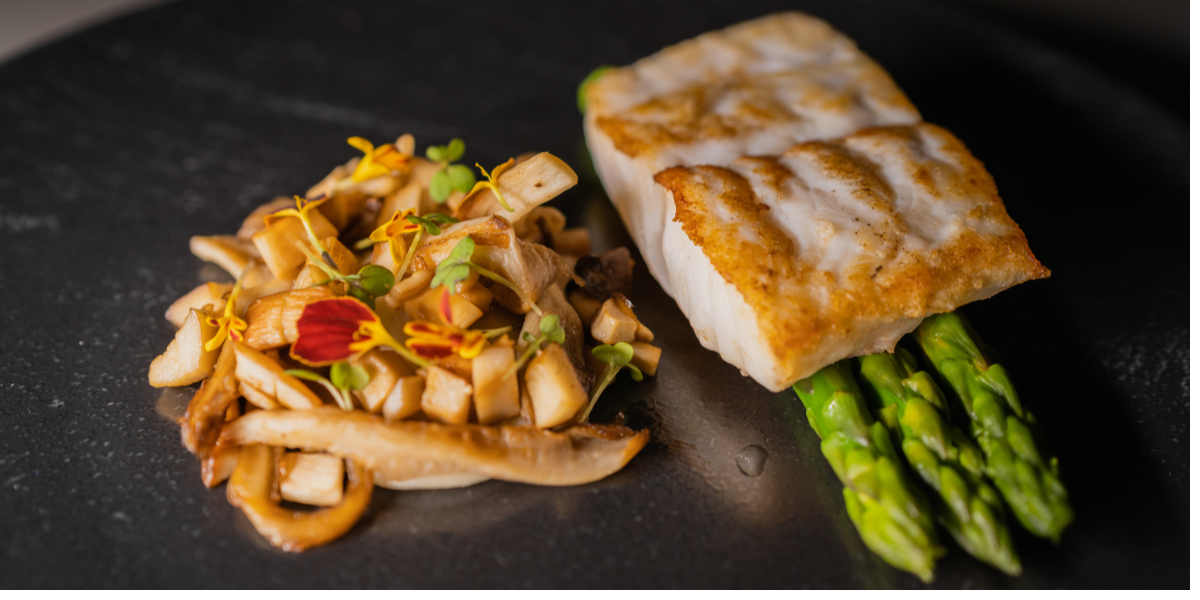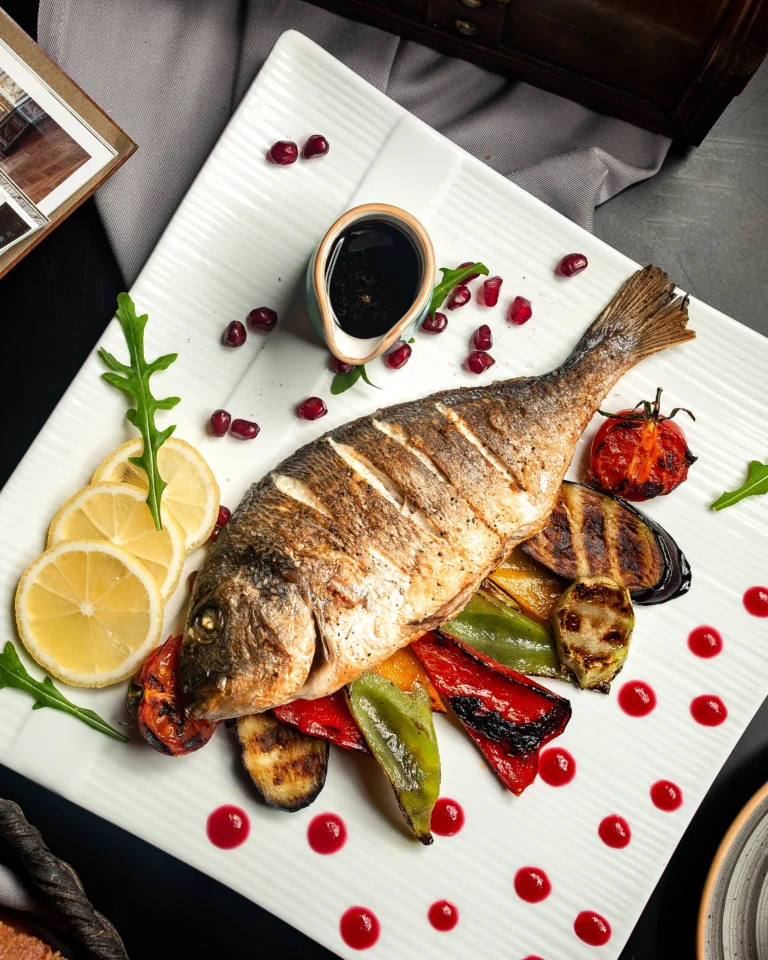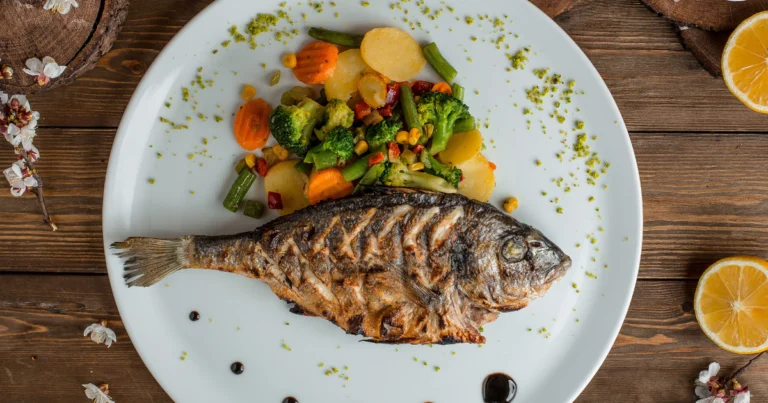how to cook swordfish in the oven: Step-by-Step Guide
Craving a restaurant-quality meal at home? This oven-baked swordfish recipe delivers bold flavors with minimal effort. Perfect for busy weeknights or weekend gatherings, it transforms simple ingredients into a dish that feels special. You’ll learn to prepare tender, flaky swordfish steaks seasoned with garlic, herbs, and zesty lemon—all ready in under 30 minutes.
The method focuses on simplicity. A drizzle of olive oil keeps the fish moist, while a quick marinade adds depth. Pair it with roasted vegetables or a light salad for a balanced meal. Best of all, the recipe scales easily—ideal for solo dinners or feeding a crowd.
This guide walks you through every step, from preheating your oven to plating suggestions. You’ll also find time-saving tricks, like prepping sides while the fish bakes. A tangy lemon vinaigrette finishes the dish, adding brightness without overpowering the natural richness of the swordfish steaks.
Table of Contents
Recipe Inspiration and Overview
This isn’t just another fish recipe—it’s a culinary legacy reimagined for today’s kitchens. Born from decades of family meals and coastal traditions, the method celebrates simplicity while delivering restaurant-worthy results.
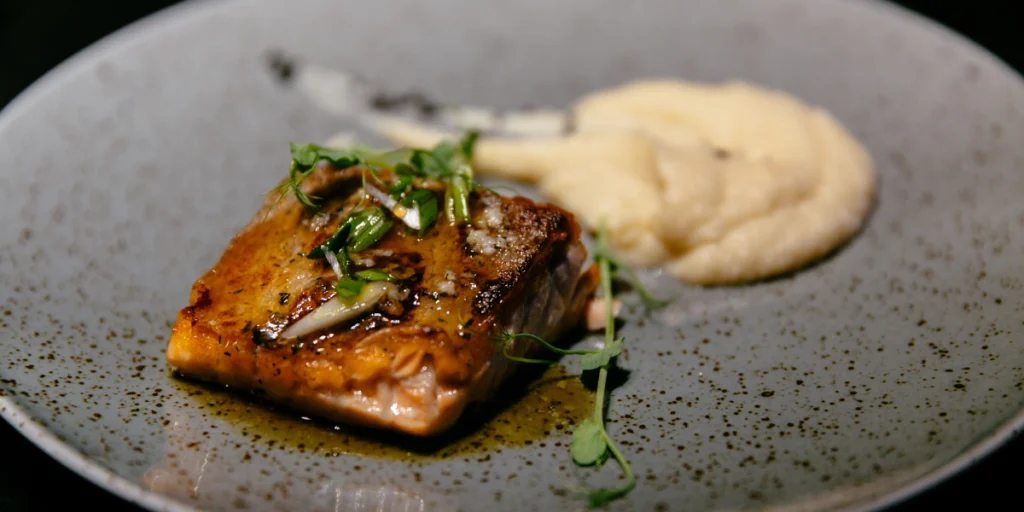
Background and Family Favorites
Generations of home cooks have relied on oven-baked techniques to highlight swordfish’s natural richness. Unlike pan-searing, which requires constant attention, roasting lets you focus on sides or sauces. The approach became a weekday staple in Mediterranean households for its balance of speed and flavor.
How This Recipe Stands Out
What makes this version unique? Precision timing ensures moist results every time—no guesswork needed. A 10-minute marinade and 12-15 minutes in a preheat oven create caramelized edges without drying the center. Compare it to other methods:
| Method | Prep Time | Skill Level | Flavor Depth |
|---|---|---|---|
| Oven Baking | 5 min | Beginner | Rich, even seasoning |
| Pan Searing | 10 min | Intermediate | Spotty charring |
| Grilling | 15 min | Advanced | Smoky notes |
Whether you’re hosting friends or feeding picky eaters, this recipe adapts effortlessly. Fresh herbs brighten each bite, while garlic-infused oil adds complexity. It’s proof that timeless techniques still shine in modern cooking.
How to Cook Swordfish in the Oven
Achieving perfectly baked fish requires attention to three elements: precise heat, balanced seasoning, and careful timing. Start by preheating your appliance—this step ensures even cooking from edge to center. Balancing salt and oil amplifies the dish’s flavor without overwhelming delicate textures. Proper preparation locks in moisture while creating a golden exterior.
Preheat, Season, and Prepare
Set your oven to 400°F (204°C) and let it reach full temperature before adding the fish. This guarantees consistent results. Pat the steaks dry and rub them with a generous pinch of salt on both sides. Salt draws out natural juices, enhancing flavor. A light drizzle of oil creates a crisp exterior rich in flavor and prevents sticking.
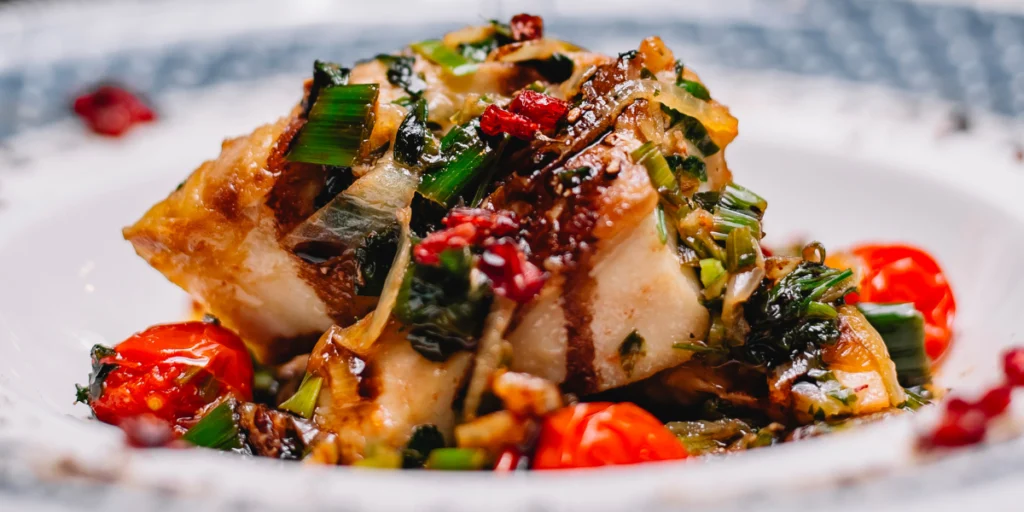
Arrange the steaks in a single layer within an oven-safe dish, leaving space for air circulation. Brushing the dish with oil avoids residue and simplifies cleanup. Season with salt just before baking for maximum effect. For extra flavor, add a second drizzle of oil over the steaks.
Baking and Checking for Doneness
Bake for 12-15 minutes, adjusting time based on your oven’s calibration. Use a food thermometer to confirm the internal temperature reaches 145°F (63°C). Timing is critical—checking a few minutes early prevents overdone edges. The flesh should appear opaque and flake easily when tested.
Remove the dish promptly once done. Let the fish rest for 3 minutes, allowing juices to redistribute. Resting time ensures flavors meld perfectly. Overcooking leads to dryness, so monitor closely for tender results every time.
Oven-Baked Swordfish Steaks
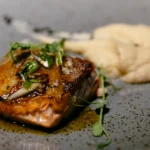
A simple yet elegant oven-baked swordfish recipe that delivers restaurant-quality flavor in under 30 minutes. Tender, flaky, and infused with garlic, lemon, and herbs—perfect for weeknights or dinner parties.
- Oven
- – 2 swordfish steaks (1–1.5 inches thick)
- – 2 tbsp olive oil (cold-pressed recommended, divided)
- – 2 cloves garlic (minced)
- – 1 tsp kosher salt
- – 1/2 tsp freshly cracked black pepper
- – 1 tbsp lemon juice (optional)
- – Lemon zest (for garnish)
- Preheat your oven to 400°F (204°C).
- Pat swordfish steaks dry with paper towels.
- Rub both sides with 1 tbsp olive oil, kosher salt, and black pepper.
- Add minced garlic evenly over the surface.
- Place steaks in a lightly oiled oven-safe dish in a single layer.
- Bake for 12–15 minutes, depending on thickness, or until the internal temperature reaches 145°F (63°C).
- Optional: drizzle with lemon juice after baking.
- Let the fish rest for 3–4 minutes before serving. Garnish with lemon zest.
– Searing option: for extra flavor, sear the steaks 2–3 minutes per side in a hot skillet before baking.
– Pair with roasted vegetables, couscous, or a light citrus salad.
– Avoid overcooking to keep the texture moist and flaky.
Essential Ingredients for Baked Swordfish
Great meals start with great ingredients—this recipe proves it. Every component plays a role in creating balanced flavors and textures. Let’s break down what you’ll need and why quality matters.
Key Components and Quality Picks
Olive oil forms the flavor foundation. Choose cold-pressed varieties for their fruity notes and high smoke point. Fresh garlic adds aromatic depth, while cracked black pepper brings subtle heat without overpowering the fish.
Your steaks should feel firm and glisten slightly. Look for thick cuts (1-1.5 inches) from sustainable sources. Thin slices dry out quickly, ruining the dish’s delicate texture.
“Freshness transforms simple recipes into memorable meals.”
| Ingredient | Fresh vs. Standard | Impact on Dish |
|---|---|---|
| Olive Oil | Cold-pressed | Rich, smooth finish |
| Garlic | Recently peeled | Bright, pungent kick |
| Pepper | Freshly ground | Complex heat layers |
| Steaks | Day-caught | Moist, flaky texture |
Dairy-free oil alternatives work but lack olive oil’s distinct character. Pre-minced garlic saves time but loses potency. For best results, stick to the listed ingredients—they’re tested to complement each other perfectly.
Prepping Your Swordfish: Seasoning and Searing
Transform ordinary fish into a culinary masterpiece with smart prep work. Proper seasoning and searing techniques create layers of flavor while preserving moisture. This step-by-step approach ensures your meal impresses without extra effort.
Salt, Pepper, and Garlic Essentials
Start by patting your steaks dry with paper towels. Moisture prevents proper browning. Generously season both sides with kosher salt and cracked black pepper. Let the fish rest for 5 minutes to absorb flavors.
Rub minced garlic into the surface for aromatic depth. Fresh garlic outperforms powdered versions, offering brighter taste. For extra zing, add lemon zest or smoked paprika to your spice blend.
Mastering the Sear
Heat a cast-iron skillet over medium-high until it sizzles with a water droplet. Add 1 tablespoon of oil and swirl to coat. Place steaks in the pan—they should hiss immediately. Cook 2-3 minutes per side until golden-brown crust forms.
| Technique | Result | Key Benefit |
|---|---|---|
| Dry Surface | Crisp exterior | Prevents steaming |
| Hot Pan | Caramelization | Locks in juices |
| Timed Flip | Even cooking | Avoids toughness |
This crust acts as a barrier, keeping the center tender. Pair your perfectly seared fish with roasted sides like asparagus or quinoa. The contrast of textures elevates your dinner from basic to extraordinary.
Building Flavorful Sauces and Vinaigrettes
Sauces transform your meal from satisfying to unforgettable. Two standout options—bright lemon vinaigrette and smoky blackening seasoning—enhance the steak-like texture of your fish while keeping it juicy. Both methods require minimal effort but deliver maximum impact.
Lemon Vinaigrette and Blackening Seasoning Variations
For a citrusy accent, whisk 3 parts olive oil with 1 part fresh lemon juice. Add minced garlic and a pinch of salt. Drizzle over baked steaks to highlight their natural richness. The acidity cuts through the meat’s density without masking its flavor.
Prefer bold flavors? Combine paprika, cayenne, and thyme for blackening seasoning. Rub it onto the fish before searing in a hot pan. This creates a crust that locks in moisture while adding spicy depth. Adjust pepper levels to control heat intensity.
| Sauce | Prep Time | Flavor Profile |
|---|---|---|
| Lemon Vinaigrette | 3 minutes | Bright, tangy |
| Blackening Blend | 2 minutes | Smoky, robust |
Both methods preserve the texture that makes swordfish resemble premium beef. The vinaigrette adds shine to each bite, while blackening seasoning creates a crave-worthy crust. Test each way to discover your preferred balance of zest and spice.
When seasoning in the pan, start with half the recommended spices. Taste after cooking and adjust next time. This approach lets you refine flavors over multiple meals without overwhelming the meat’s delicate character.
Baking Process: Time, Temperature, and Technique
Precision transforms good dishes into great ones. Nailing the time-temperature balance ensures your fish stays juicy while developing a golden crust. Follow these instructions closely for foolproof results every time.
Optimal Oven Temperature and Timing
Set your appliance to 400°F (204°C) and let it fully preheat. This stabilizes heat distribution for even cooking. Thick cuts need 14-15 minutes, while thinner portions finish in 12. Use a kitchen timer—guessing leads to dryness.
Why does timing matter? Fish proteins tighten quickly under high heat. A few extra minutes can turn tender flesh into rubber. Stick to printed guidelines if you’re new to seafood prep.
How to Tell When Your Fish Is Perfectly Cooked
Insert a meat thermometer into the thickest part. Aim for 145°F (63°C)—the USDA-recommended safe temperature. No tool? Gently press the surface; it should spring back slightly. Look for opaque flesh that separates into flakes.
| Method | Accuracy | Time Saved |
|---|---|---|
| Thermometer | Exact | 2 minutes |
| Flake Test | Moderate | Instant |
| Visual Check | Basic | None |
Let steaks rest 3-4 minutes after baking. This allows juices to settle, enhancing texture. Store leftovers in the refrigerator within two hours for food safety. For best quality, reheat gently with a pin of added herbs.
Pro tip: Print these instructions and keep them handy. A single sheet pinned to your cooking board eliminates mid-recipe phone scrolling. Fresh rosemary leaves make a fragrant garnish if served immediately.
Tips and Tricks for Perfect Texture and Flavor
Moisture management separates good results from exceptional ones. Mastering a few simple techniques ensures your dish stays succulent from oven to plate. Let’s explore methods professionals use to lock in flavor while preventing common pitfalls.
Expert Advice to Avoid Dryness and Overcooking
Fat acts as your secret weapon. Use 2-3 tablespoons olive oil per pound of fish—enough to coat without drowning. Brush it evenly before seasoning. This creates a protective layer that traps natural juices during baking.
Timing makes or breaks texture. Set a timer for 12 minutes at 400°F, then check progress. Thicker cuts may need 3 extra time minutes, but never exceed 15 total. Remember: residual heat continues cooking after removal.
| Technique | Benefit | Oil Quantity |
|---|---|---|
| Pre-Brush | Prevents sticking | 1 tbsp |
| Mid-Bake Baste | Adds moisture | 0.5 tbsp |
| Post-Rest Drizzle | Enhances shine | 0.5 tbsp |
Resting matters. Transfer steaks to a warm plate for 4 minutes before serving. This lets fibers relax, redistributing internal liquids. Cutting too soon releases precious juices onto the plate.
Stick to tested swordfish recipe ratios for seasoning. Over-salting draws out moisture, while under-seasoning leaves flavors flat. A trusted baked swordfish recipe balances these elements through precise measurements.
Delicious Side Dishes and Serving Suggestions
A meal shines brightest when every element works together. Pair your main protein with sides that balance texture and flavor. Simple choices let the star ingredient take center stage while adding visual appeal.
Complementary Vegetables and Grains
Roasted asparagus or green beans add earthy notes. Toss them with olive oil and salt pepper before roasting at 400°F for 12-15 bake minutes. Fluffy couscous or quinoa absorbs pan juices beautifully. For tang, drizzle balsamic glaze over veggies after cooking.
A squeeze of lemon juice brightens both fish and sides. Add zest to grain salads for extra citrus pop. Check your local grocery store for seasonal produce—it often costs less and tastes fresher.
Creative Presentation Ideas for Your Dish
Arrange steaks diagonally on warm plates. Scatter capers and chopped parsley around the edges. Place lemon slices underneath for a vibrant color contrast. Use wide, shallow bowls to showcase grain salads with herb sprigs.
Store leftovers in an airtight container for up to two days. Reheat gently with a splash of lemon juice to revive flavors. For gatherings, serve sides in colorful dishes to make the spread feel inviting.
Conclusion
Mastering this dish comes down to smart techniques and fresh ingredients. A hot skillet creates that golden crust, while melted butter blended with herbs locks in moisture. Timing your baking ensures tender results every time—flaky without dryness.
Fresh lemon brightens each bite. Squeeze it over the fish just before serving or add zest to your garnish. Pair with colorful sides like roasted veggies for visual appeal that matches the bold flavors.
Watch for perfect flakes when testing doneness. Letting the fish rest preserves its juicy texture. This method proves healthy meals don’t require hours—or fancy tools.
Ready to impress? Whip out your trusty skillet and preheat the oven. In under 30 minutes, you’ll have a restaurant-worthy plate that delights all senses. Simple steps, unforgettable taste—exactly how great cooking should feel.
FAQ
What’s the ideal oven temperature for baking swordfish?
Preheat your oven to 400°F. This ensures even cooking while preserving the firm texture of the steaks. Avoid higher temps to prevent dryness.
Should I sear swordfish steaks before baking?
Searing in a skillet with olive oil creates a golden crust, locking in juices. For best results, use medium-high heat for 2–3 minutes per side before transferring to the oven.
How do I know when swordfish is fully cooked?
The fish should reach an internal temperature of 145°F. Look for opaque flesh that flakes easily with a fork. Overcooking leads to a dry, rubbery texture.
Can I substitute olive oil with butter?
Yes, but butter burns faster. For a richer flavor, mix olive oil and butter. Use clarified butter if searing to avoid smoking.
What sides pair well with baked swordfish?
Try lemon-infused quinoa, roasted asparagus, or a tangy citrus salad. These complement the fish’s bold flavor without overpowering it.
How long can I store leftovers?
Store cooled swordfish in an airtight container in the refrigerator for up to two days. Reheat gently to maintain moisture and texture.

